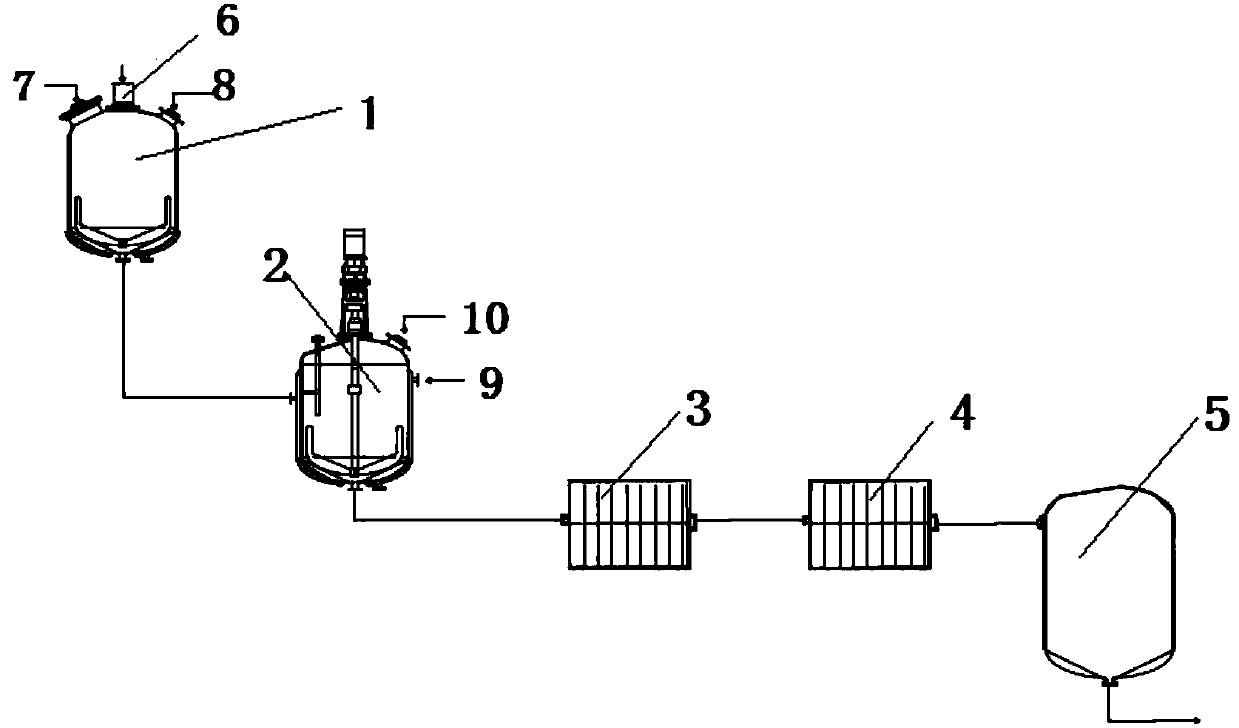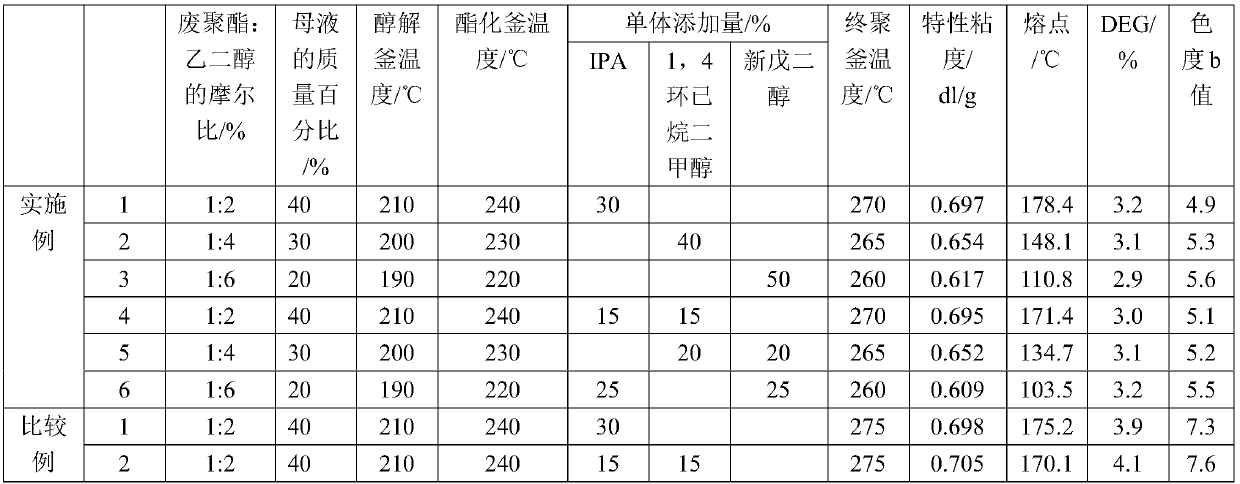Method for preparing regenerative low-melting-point polyester with waste-polyester alcoholysis method
A low-melting point polyester and waste polyester technology, applied in the direction of single-component polyester rayon, rayon manufacturing, fiber chemical characteristics, etc., can solve the problem of large fluctuations in the content of by-product diethylene glycol and the hue of recycled polyester Variation, melting point is not easy to control and other problems, to achieve the effect of stabilizing the quality of alcoholysis products, reducing by-products, and realizing high-value recycling
- Summary
- Abstract
- Description
- Claims
- Application Information
AI Technical Summary
Problems solved by technology
Method used
Image
Examples
Embodiment 1
[0017] A kind of waste polyester alcoholysis method of the present embodiment prepares the method for regenerated low-melting point polyester, such as figure 1 As shown, it includes the following steps: 1) pretreatment of waste polyester, directly smashing the clean waste polyester blocks into the feed bin, cutting the clean waste polyester fibers into the feed bin, and waste polyester bottle flakes Sorting, cleaning, impurity removal, crushing, cutting, and then feeding into the silo, and then mixing ingredients for the next process; 2) alcoholysis of waste polyester, the pretreated waste polyester, according to waste polyester (waste polyester) The molar percentage ratio of 1:2 is put into the alcoholysis kettle 1, and the alcoholysis kettle 1 contains ethylene terephthalate and oligomer (mother liquor) (adding in the first additive inlet 8), wherein the addition of ethylene terephthalate and oligomer (mother liquor) accounts for 40% of the total mass percentage of dropping ...
Embodiment 2
[0020]As described in Example 1, the difference is: the molar percentage of waste polyester and ethylene glycol is 1:4, and the alcoholysis still contains ethylene terephthalate and oligomers (mother liquor), wherein the The addition amount of ethylene glycol diformate and oligomer (mother liquor) accounted for 30% of the total mass percentage of input waste polyester, the reaction temperature was 200° C., and the reaction time was 4 hours. Add 0.2‰ (accounting for the mass percent of the product obtained) of phosphorous acid stabilizer; the esterification reaction temperature is 230 ° C, the reaction time is 1.5 hours, and simultaneously add 40% (accounting for the mass percent of the product obtained) of 1,4 cyclohexanedimethanol, 0.4 % (accounting for the mass percent of the obtained product) of DEG, so that the DEG content (accounting for the obtained product mass percent) of the esterified product is 2.4%. The temperature of polycondensation-I and polycondensation-II is c...
Embodiment 3
[0023] As described in Example 1, the difference is: the molar percentage of waste polyester and ethylene glycol is 1:6, and the alcoholysis still contains ethylene terephthalate and oligomers (mother liquor), wherein the The addition amount of ethylene glycol diformate and oligomer (mother liquor) accounted for 20% of the total mass percentage of input waste polyester, the reaction temperature was 190° C., and the reaction time was 2 hours. Add the trimethyl phosphate stabilizer of 0.2‰ (accounting for the mass percent of the product obtained); 220° C. of esterification reaction temperature, 1 hour of reaction time, add simultaneously the neopentyl glycol of 50% (accounting for the mass percent of the product obtained), 0.2% ( Accounting for DEG in the mass percent of the obtained product), the DEG content in the esterified product (accounting for the obtained product in mass percent) is 2.4%. The temperature of polycondensation-I and polycondensation-II is controlled to be 2...
PUM
| Property | Measurement | Unit |
|---|---|---|
| Intrinsic viscosity | aaaaa | aaaaa |
| Melting point | aaaaa | aaaaa |
| Intrinsic viscosity | aaaaa | aaaaa |
Abstract
Description
Claims
Application Information
 Login to View More
Login to View More - R&D
- Intellectual Property
- Life Sciences
- Materials
- Tech Scout
- Unparalleled Data Quality
- Higher Quality Content
- 60% Fewer Hallucinations
Browse by: Latest US Patents, China's latest patents, Technical Efficacy Thesaurus, Application Domain, Technology Topic, Popular Technical Reports.
© 2025 PatSnap. All rights reserved.Legal|Privacy policy|Modern Slavery Act Transparency Statement|Sitemap|About US| Contact US: help@patsnap.com


